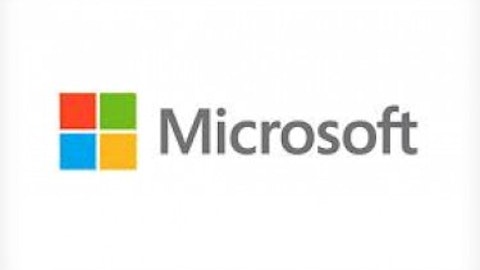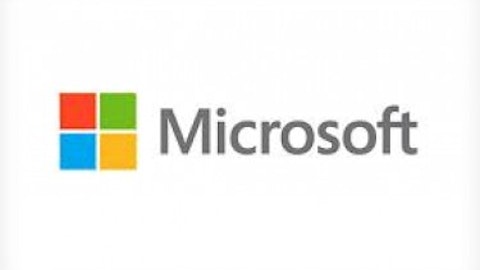On this day in economic and business history …
What does it feel like to invest on the exact day that the longest secular bear market in modern history ends and the greatest uninterrupted bull market in American history begins? You’re not likely to find anyone alive today who remembers, because that day was Aug. 24, 1921, when a two-decade bull market in the Dow Jones Industrial Average (INDEXDJX:.
The further decline yesterday in the principal industrial stocks, which at times affected some of the railway shares also, indicated the same governing influences as have now prevailed for several weeks. Financial sentiment has certainly been affected by the confusing results of the collapsed speculation in the trade and produce of countries to the south of us; the consequent hesitancy of the investing community has made the market more susceptible to speculative attacks. The opportunity has not been missed; the present persistent operations for the decline have been wholly based on this attitude of the general public.

The Dow closed out the day at 63.90 points, which meant that the index had lost 18% over the span of two full decades (plus a month and change). The index’s prior all-time high of 78.26 points had occurred in June 1901. What came next would transform American investing, and ultimately American life. Driven by the adoption of exciting new technologies like radio (national radio networks had not yet been established in 1921), and propelled even higher by the emergence of the first modern credit-driven consumer culture, the Dow would go on an incredible and unsurpassed eight-year run in which the average trading day produced gains of roughly 0.25%.
By the time the Dow peaked in 1929, it was nearly 500% higher than it had been on Aug. 24, 1921, and its cyclically adjusted P/E ratio, or CAPE, had soared from 5.2 to 32.6, a 530% increase — both by far the largest increases ever seen in a single uninterrupted bull market. By comparison, the Dow’s great decade-long rise during the dot-com era — while longer by 20 months — produced total price growth of merely 400% and a comparatively modest 190% increase in the market’s CAPE.
What happened after the Roaring ’20s fell silent is a story for Sept. 3, when in 1929 the Dow finally peaked. Stay tuned to learn more about that day and its aftermath right here on The Motley Fool.
The panic that broke/saved/changed America
The Ohio Life Insurance and Trust Company failed on Aug. 24, 1857, setting off the Panic of 1857 and plunging the United States into a short, sharp recession that turned a slow-burning international economic downturn into the first global financial crisis. The Chicago Daily Tribune explained on the following day why that singular Ohio bank was the Lehman of 1857:
The Ohio Life and Trust Co. was one of the oldest and heaviest corporations in the West, or indeed in the whole country. The Company had two houses, one in New York and one in Cincinnati. We understand that both have closed their doors.
The Life and Trust Company kept the New York accounts of most of the Branches of the State Bank of Ohio, and also of a large number of private institutions in that State and Indiana. It controlled the exchange market of Cincinnati, and through it, of a considerable portion of the West, where the failure will be seriously felt.
This highly interconnected bank’s collapse threatened the health and potentially the continued existence of many other regional banks. The fact that its losses had been heavily weighted by a wave of farm mortgage defaults and railroad stock declines only served to publicize the parlous nature of the regional economy, which had earlier been fueled by a migration-driven railroad boom. Investors began to reimburse their holdings for gold en masse. Many banks were forced to suspend gold payments after the steamship Central America, laden with more than 15 tons of gold from California, sank in a hurricane the following month while heading toward New York City. By then the panic had well and truly taken hold.
The industrializing economy of Northern states, more diverse but more dependent on the financial system, suffered far worse than the agrarian South, which wasn’t paying its workforce enough to have to worry about running out of money at any rate. This discrepancy actually had the effect of softening Southern agitations for secession, but it also stirred Northern anger against the Southern-dominated Democratic Congress, and that anger had a part to play in Abraham Lincoln’s eventual ascent to the presidency three years later. This link to the Civil War makes the Panic of 1857 undoubtedly one of the more transformative financial crises in American history.
Mmm, salty
Legend has it that the potato chip was born on Aug. 24, 1853, at the Moon Lake Lodge in Saratoga, N.Y. There, transportation magnate Cornelius Vanderbilt unintentionally inspired chef George Crum when he complained that his fried potatoes were too thick and soggy. After his second effort was also rejected, Crum retaliated by slicing a potato wafer-thin and frying the slices crisp with salt. The potato chip was born, and it was delicious.
Today, potato chips account for $6 billion in annual sales in the United States (and are projected to be worth more than $10 billion in annual sales by 2015), and accounted for at least $16 billion in annual worldwide sales in 2005. The largest potato chip brand by far is PepsiCo, Inc. (NYSE:PEP)‘s Lays, which account for at least $2 billion in annual sales across all varieties, according to Grocery Headquarters.
Start me up
Microsoft Corporation (NASDAQ:MSFT) was already 100 million users strong when it launched Windows 95 on Aug. 24, 1995. Still, the hot software company (its shares had already grown in price by more than 6,000% in the nine years since its IPO) spared no expense to tell the world that it was time to upgrade.
The company set aside $300 million for marketing the new operating system, which was the first to unify Microsoft Corporation (NASDAQ:MSFT)’s earlier Windows user interfaces with programs and features still designed for MS-DOS. Microsoft Corporation (NASDAQ:MSFT) spent $12 million just to acquire the rights to the Rolling Stones’ “Start Me Up,” which became Windows 95’s theme song. Millions more went toward printing 1.5 million free Microsoft-branded copies of the London Times, crafting a 300-foot-long Windows 95 banner to hang from Toronto’s CN Tower, and creating a light show that wrapped New York City’s Empire State Building in the company’s colors.
Still, the expense was expected to pay off — 20% of Microsoft Corporation (NASDAQ:MSFT)’s 100 million users were expected to upgrade with the $90 OS within a year, which would have easily resulted in more than $500 million in profit for the famously high-margin company. Indeed, Microsoft Corporation (NASDAQ:MSFT) vastly exceeded that figure by the end of the following year, as its 1996 net income topped out at $2.5 billion. Thousands of newspaper stories, TV news segments, radio spots, and national magazine cover stories combined to ensure that hundreds of millions of people knew about Windows 95.
The hoopla certainly helped boost surging computer sales, too. An estimated 238 million computers were in use in 1995, and by the turn of the century, that number doubled to 558 million computers. It also shot Microsoft Corporation (NASDAQ:MSFT) to the top of the dot-com bubble, and it became the largest American company of all time by the end of 1999. The five years that followed Windows 95’s launch saw Microsoft’s shares rise over 800% more, and exactly five years later they still held a 500% gain over the launch day of Windows 95. Although Microsoft ceased supporting Windows 95 in 2001, it’s continued to grow its user base ever since — there are now well over a billion PCs running various versions of Windows around the world.
The article The First Day of the Greatest Bull Market in History originally appeared on Fool.com and is written by Alex Planes.
Fool contributor Alex Planes holds no financial position in any company mentioned here. Add him on Google+ or follow him on Twitter, @TMFBiggles, for more insight into markets, history, and technology.The Motley Fool recommends PepsiCo and owns shares of Microsoft and PepsiCo.
Copyright © 1995 – 2013 The Motley Fool, LLC. All rights reserved. The Motley Fool has a disclosure policy.





